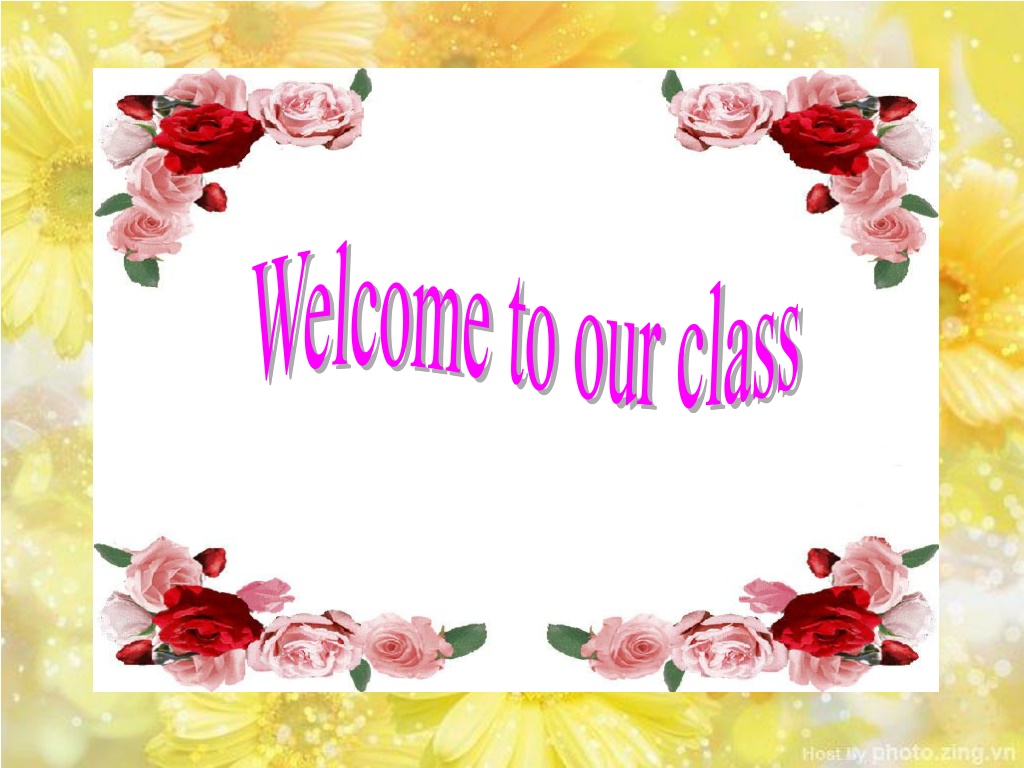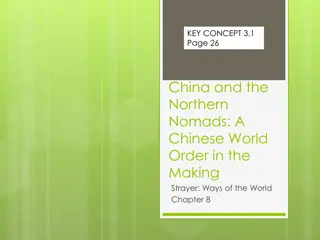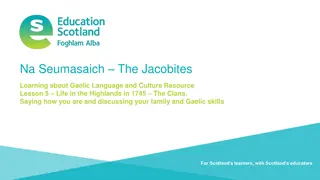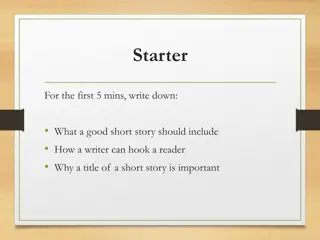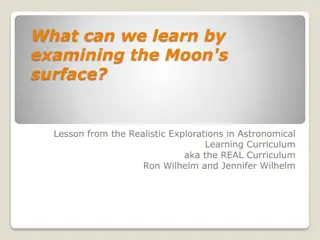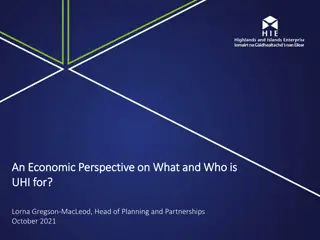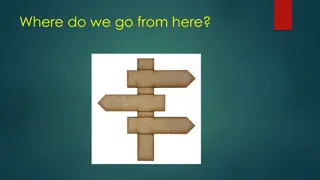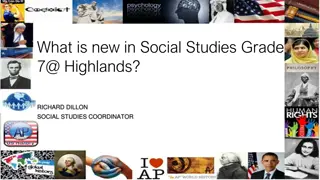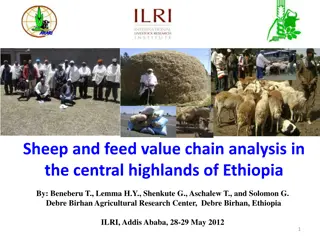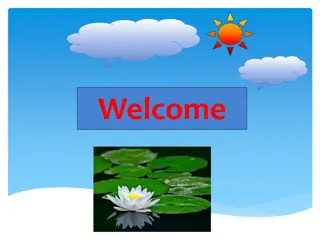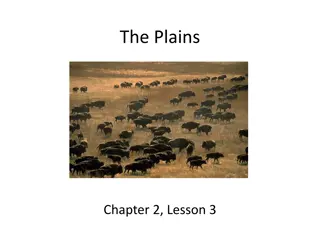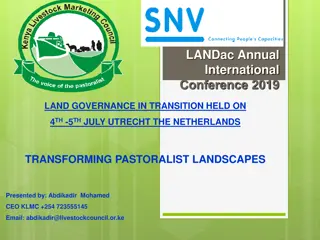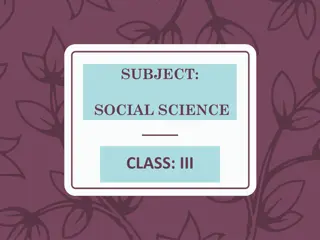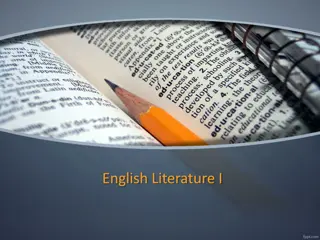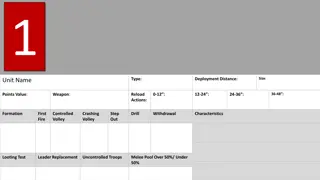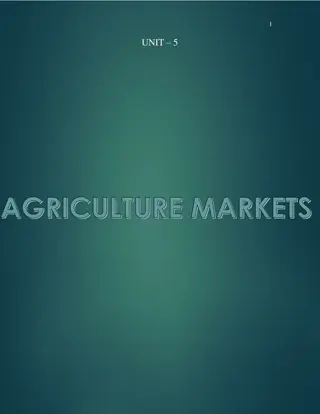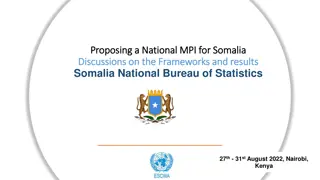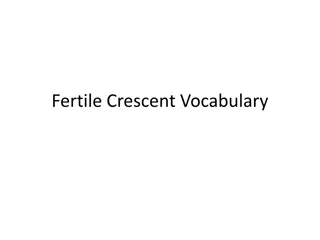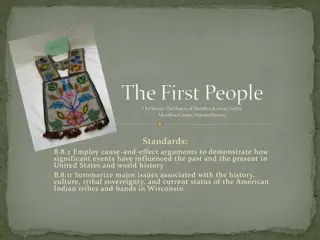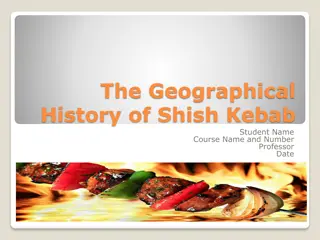Nomadic Life on the Gobi Highlands - English 8 UNIT 2
Discover the nomadic life on the Gobi Highlands through an English 8 reading exercise. Follow the daily routine of nomadic children, learn about the importance of cattle to nomads, and explore their traditional lifestyle in the midst of vast pastures and mountains. Engage in activities like matching descriptions with words from the passage and answering questions about nomadic life.
Download Presentation

Please find below an Image/Link to download the presentation.
The content on the website is provided AS IS for your information and personal use only. It may not be sold, licensed, or shared on other websites without obtaining consent from the author. Download presentation by click this link. If you encounter any issues during the download, it is possible that the publisher has removed the file from their server.
E N D
Presentation Transcript
What have you seen in the pictures? What place is this? Where is it? What is the life? Who are the people?
English 8 UNIT 2 . LIFE IN THE COUNTRYSISE PERIOD 13: SKILLS 1
A. Reading : 1. Quickly read the passage and choose the most suitable heading A, B, or C for each paragraph. A. Nomadic children s lives B. The importance of cattle to the nomads C. The nomads home NOMADIC LIFE ON THE GOBI HIGHLANDS ________________________________________ B. The importance of cattle to the nomads 1. We don t live a normal life like many other people. We live a nomadic life. This means we move two or three times a year to look for new pastures - grasslands - for our cattle. The cattle provide most of our needs: dairy products, meat, and clothing. 2. ______________________________________ We live in a ger, our traditional circular tent. It keeps us cool in summer and warm in winter, even when the temperature drops to -50 C. It can be put up then taken down and transported. 3. ______________________________________ For most of the year, we are surrounded by vast pastures, rivers and mountains. We see few people from the outside world. When we are small, we play on our land and with the animals. The horse is our best friend. Any nomadic child can ride a horse. We learn from an early age to help in the family, from household chores to heavier work like herding the cattle. We also learn to be brave. C. The nomads home A. Nomadic children s lives
2. Match the descriptions with the words/ phrases from the passage. Words/ Phrases Descriptions 1. a ger a. a life on the move 2. dairy products b. a circular tent in which Mongolian nomads live 3. cattle c. grasslands 4. nomadic life d. milk, butter, cheese 5. pastures e. cows, goats, buffaloes ...
3. Read the passage again and choose the best answer A, B, C, or D. 1. We live __________ other people. A. a different life to B. similarly to C. the same life as D. in exactly the same way as We don t live a normal life like many other people. 2. We have to move in order to __________. A. change our lifestyle B. look for better weather C. look for food for our cattle D. be closer to the city This means we move two or three times a year to look for new pastures - grasslands - for our cattle. 3. Our cattle can provide us with __________. A. most of our needs B. food only C. means of transport only D. anything we want The cattle provide most of our needs: dairy products, meat, and clothing.
It can be put up then taken down and transported. 4. When we move to a new place, we __________. A. have to make a new ger B. put up the ger C. buy a new ger D. share a ger with our neighbours It keeps us cool in summer and warm in summer. 5. Nomadic children __________. A. play the same games as other children in the world B. use nature and their animals as playthings C. do not like toys D. spend all their time helping with housework 6. Mongolian children in the Gobi learn __________. A. to ride a goat B. to live in the mountains C. to be generous D. to help with household chores
4. Work in pairs: Interview your partner to find out what he/ she likes/ doesn t like about the life of the nomads. SPEAKING Example: A: life? B: horse. A: B: place. I like .. I don t like What do you like about their nomadic Children learn to ride a horse It s very hot in summer and very cold in winter Well, the children learn to ride a Children play on vast pastures And what don t you like about it? They can t live permanently in one * Imagine you are a nomadic child. Shortly tell us about your life in Gobi highlands. Start like this: I am a nomad in Gobi Highlands ..
a horse a camel a tent a pole ride put up the cattle hay water the buffaloes herd collect wild flowers apples pick
5a. Work in pairs. Discuss and find. - two things you like about life in the countryside - two things you don t like about life in the countryside I like .. I don t like Because . Picking fruit in the summer Hard work but satisfying Swimming in the river Dangerous 5b. Report your findings to the class. Example: Both of us love picking fruit in the summer. It can be hard work but very satisfying.
HOMEWORK Copy down & Learn by heart the new words. Be ready for SKILLS 2. Prepare for Project: I love the countryside * Draw a picture of a place you would like to live in the countryside - the things you have in your picture TALK ABOUT the activities you can do there Example: a wooden house a beautiful river a boat a field of wild flowers biking along the river picking wild flowers swimming in the river boating on the river
